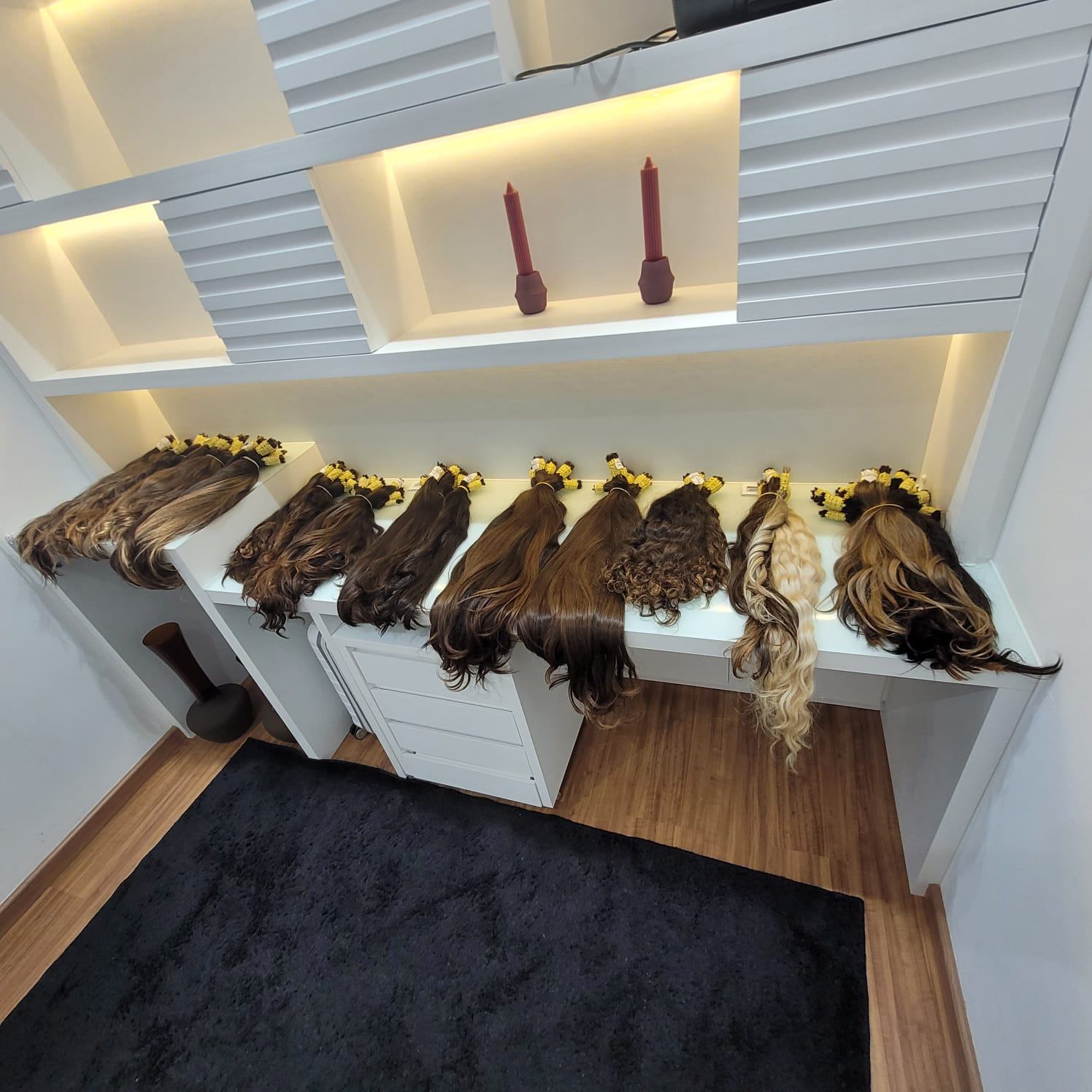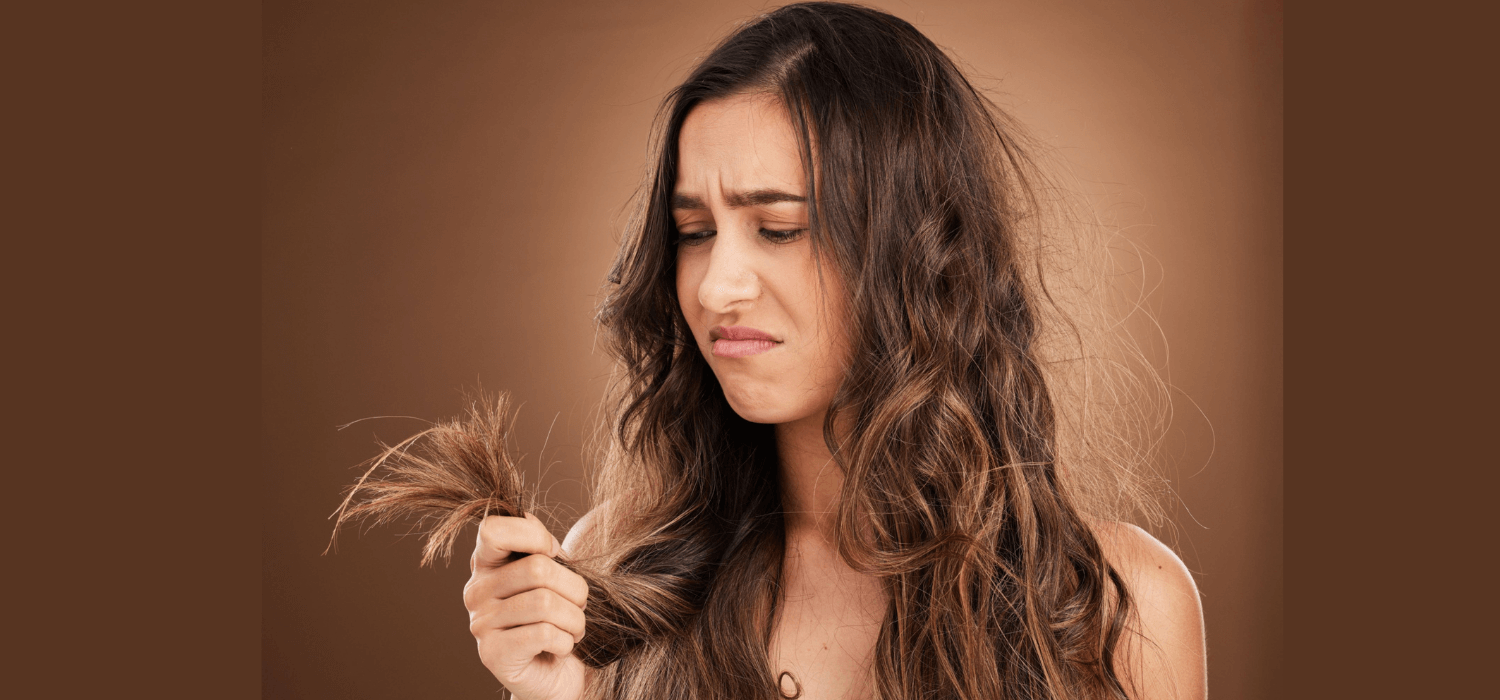Best Hair Loss Treatment for Male: Quick & Lasting Fixes
Key Highlights
-
Male hair loss is highly common, with most men showing visible thinning by midlife.
-
Cosmetic options include toppers, extensions, wigs, custom patches, and integration systems for seamless blending.
-
Scalp micropigmentation, fibers, and concealers offer discreet and low-maintenance methods to enhance density.
-
Medical treatments like minoxidil, finasteride, PRP, and laser therapy can slow progression but require long-term consistency.
-
Customized consultations ensure men choose the right solution for their stage of thinning and lifestyle.
-
Combining cosmetic and clinical methods often gives the most balanced and lasting results.
Noticing more hair in the sink? Feeling like your hairline is creeping back or a bald spot is starting to show? You’re not alone. Most men face these changes, and it can affect both confidence and appearance.
The good news is you have more options than ever. With the best hair loss treatment for male clients, it’s possible to restore fullness, feel confident again, and choose solutions that fit your lifestyle.
This guide covers cosmetic systems such as toppers, wigs, and patches, along with options like scalp micropigmentation, fibers, and expert care to restore natural coverage and confidence at every stage of hair loss.
What Are the Main Causes of Male Hair Loss and How Is It Diagnosed?

Genetics is the most common factor, but stress, illness, and lifestyle choices can also contribute to hair loss. Identifying the root cause helps ensure the right treatment plan is chosen. The majority of men experience androgenetic alopecia, also called male pattern baldness, driven by genetics and the hormone DHT, which gradually shrinks hair follicles.
But other conditions can trigger shedding or thinning:
-
Telogen Effluvium: Sudden shedding linked to illness, stress, or surgery; often temporary.
-
Alopecia Areata: An autoimmune condition causing patchy bald spots.
-
Traction Alopecia: Caused by continuous pulling from tight styles such as braids or dreadlocks; more relevant for hair loss treatment for black males.
-
Scarring Alopecia (CCCA): A rarer condition that begins at the crown and can spread outward.
Understanding the cause ensures the right approach, whether cosmetic or medical, is selected.
Recognizing Male Pattern Baldness
Male pattern baldness usually develops gradually and follows a predictable path. Spotting early signs can make treatments more effective. Key indicators include:
-
Receding Hairline: Thinning at the temples forming an "M" shape.
-
Crown Thinning: A bald spot that slowly expands on the vertex.
-
Diffuse Thinning: Overall thinning across the top rather than in patches.
By age 50, more than half of men show some degree of this progression.
Seeking Professional Diagnosis
Self-diagnosing hair loss is possible, but seeing a dermatologist or trichologist ensures accuracy. A professional assessment can:
-
Confirm the Type: Identify whether it's male pattern baldness or another condition.
-
Check For Underlying Issues: Rule out thyroid problems or nutritional deficiencies.
-
Examine the Scalp and History: Conduct a scalp analysis and review the family background.
-
Provide Tailored Guidance: Recommend cosmetic or clinical treatments suited to your needs.
A correct diagnosis avoids wasted effort on "miracle" fixes and points you towards proven solutions that restore confidence and results.
Also read: Decoding Female Pattern Baldness in 20s: Unveil the Truth
What Are the Best Cosmetic Options for Male Hair Thinning?

The best hair loss treatment for male can include cosmetic techniques such as camouflage styling, scalp concealers, fibers, wigs, and volumizing solutions. These options provide instant results, restore a natural appearance, and can be tailored to each client's stage of thinning.
Let's explore the most widely used cosmetic approaches and how they help men manage visible thinning.
1. Camouflage and Styling Techniques
Not ready to commit to advanced treatments yet? Camouflage is often the first step men take when thinning becomes noticeable. A strategic haircut, subtle color blending, or lightweight styling products can instantly reduce contrast and give the illusion of thicker, fuller hair. Many also rely on scalp concealers, fibers, or sprays to quickly fill in gaps and keep hair looking dense.
The real advantage of camouflage is how effortless it feels. Whether you do it at home or with help from a stylist, these simple techniques let you keep thinning discreet while giving your everyday style and confidence a boost.
2. Hair Systems and Wigs for Men
Hair systems and wigs offer full or partial coverage, making them one of the most effective solutions for men with advanced thinning or bald spots. Modern designs use lightweight, breathable bases and high-quality human hair, so they blend seamlessly with your existing strands. They’re available in multiple textures, colors, and densities, giving you a truly customized fit that feels natural and discreet.
For many men, the biggest appeal is the instant transformation. A custom-made topper or system is often described as the “secret” to reversing visible baldness. Beyond coverage, these solutions can be styled, washed, and maintained like natural hair, ensuring comfort and durability without compromising on realism.
At Noelle Salon, every system is custom-matched for texture, color, and density, creating a fit that feels comfortable and discreet. Clients also benefit from same-day options when available and ongoing maintenance services, such as tightening and adjustments, to keep results flawless.
3. Volumizing Treatments and Scalp Care
For men in the early stages of thinning, volumizing treatments and scalp care can deliver noticeable improvements. Thickening shampoos, conditioners, and lightweight styling products boost strand density and texture, giving hair an instant lift without weighing it down. Professional blow-dry services and scalp exfoliation further enhance volume by clearing buildup and creating a healthier environment for growth.
Essential oils and natural products also play a role in nourishing roots, while regular salon visits help maintain vitality over time. These approaches are often considered the best natural hair loss treatment for male clients who want subtle, effective improvements that make their hair look fuller and more resilient.
4. Scalp Micropigmentation (SMP)
Scalp micropigmentation is a non-invasive tattoo technique that uses microdots of pigment to mimic the look of natural hair follicles. It’s especially effective for receding hairlines or thinning crowns, creating the appearance of thicker density or a clean, shaved look. The pigments are customized to match your natural hair color, ensuring a seamless finish.
What makes SMP appealing is its low-maintenance nature and long-lasting results. Once sessions are complete, it requires very little upkeep and works particularly well for men who prefer short hairstyles. For those who want instant cosmetic impact without wigs or patches, SMP is one of the most reliable solutions.
5. Temporary Hair Building Fibers and Sprays
Worried about thinning showing through in the mirror? Hair fibers and sprays can give you instant coverage in minutes. These products cling to existing strands or the scalp, filling in visible gaps and creating the look of thicker, fuller hair. With multiple shades to match your natural color, they blend seamlessly and are simple enough to use at home.
The best part? They wash out easily with shampoo, so there’s no long-term commitment. For men in the early stages of thinning, fibers and sprays are a quick, affordable way to boost confidence while you explore longer-lasting options like toppers or integration systems.
What Are Custom Hair Patches and Why Are They Effective for Male Hair Loss?

A custom-made human hair patch is a specialized solution for bald spots or thinning areas. Unlike wigs or toppers, which provide broad coverage, patches target specific zones using a fine mesh or skin-like base. This creates a natural look that blends seamlessly with existing hair while remaining lightweight and discreet.
Here's how custom patches work and why they're one of the best hair loss treatments for male clients in the early to moderate stages of thinning.
How Custom Hair Patches Work?
A hair patch is built with a breathable mesh or polyurethane base that mimics the scalp. Virgin human hair is hand-tied or injected into the base to replicate natural growth. The patch is then secured using clips, medical tape, or integration methods, providing stable and undetectable coverage.
Key features of custom patches include:
-
Precision-made to match natural hair texture, color, and density.
-
Lightweight base materials designed for comfort and airflow.
-
Attachment options without harsh glue for scalp safety.
-
Custom shaping to fit small bald patches or irregular thinning zones.
-
It can be styled, cut, and maintained like natural hair.
-
Available in stock for same-day application in some cases.
-
Maintenance services, such as quick tightening, keep patches secure.
By replicating the look of natural growth, custom patches provide discreet, instant coverage for men who want a polished and healthy hair appearance.
Hair Patches vs Toppers vs Wigs: Which Is Right for You?
While all three are forms of non-surgical hair replacement systems, they serve different purposes. A hair patch targets small bald spots, a topper covers larger crown areas, and a wig replaces the entire head of hair. The choice depends on coverage needs, lifestyle, and styling goals.
|
Feature |
Hair Patches |
Toppers |
Wigs |
|---|---|---|---|
|
Coverage Area |
Small bald spots or irregular thinning |
Crown or larger thinning zones |
Wig Full scalp coverage |
|
Base Material |
Mesh or polyurethane |
Mesh or polyurethane |
Lace or monofilament bases |
|
Maintenance |
Quick tightening required |
Regular salon visits for upkeep |
Higher upkeep, cleaning, and styling |
|
Bulkiness |
Lightweight and discreet |
Moderate base size |
Full coverage, more volume |
|
Best For |
Early-stage baldness, patchy alopecia |
Diffuse thinning or crown baldness |
Advanced hair loss or total baldness |
|
Styling Flexibility |
Blends with existing hair seamlessly |
Adds density, blends with natural hair |
Complete styling freedom, full prosthesis |
|
Practical Notes |
Same-day application often available |
Balance between patch and wig |
Strong option for long-term coverage |
Also read: Easy Lace Front Wig: A Beginner’s Perfect Fit Guide
What Are the Benefits of Custom Hair Patches for Men?
Custom hair patches are designed to give men targeted coverage that feels natural and discreet. Their lightweight design, precision fit, and realistic appearance make them a reliable choice for those dealing with localized baldness or thinning.
Here's why many men choose patches:
-
Immediate transformation with natural-looking density.
-
Crafted with virgin human hair for realistic texture and styling.
-
Secure base materials, such as mesh or polyurethane, for added comfort and support.
-
Quick tightening services keep patches stable between appointments.
-
Less bulky than toppers or wigs, making them easy to wear on a daily basis.
-
Suitable for patchy alopecia, early male pattern baldness, or isolated crown spots.
-
Available in stock for same-day application at Noelle Salon.
For men seeking a precise, discreet, and confidence-boosting solution, custom patches offer one of the best hair loss treatments for male clients today.
Also read: Unveiling the Cost: How Much is a Human Hair Wig
What Medical and Clinical Treatments Are Available for Male Hair Loss?

Medical treatments are often recommended for men experiencing early to moderate hair thinning or male pattern baldness. While they don't give instant coverage like cosmetic solutions, they can help slow hair loss or, in some cases, encourage regrowth. Combining these treatments with salon-based methods often provides the most balanced results.
1. Medications for Male Hair Loss
For many men, the first line of defense comes in a bottle or pill. The two FDA-approved options are Minoxidil (topical) and Finasteride (oral). Minoxidil widens blood vessels to improve oxygen and nutrient delivery to follicles, while Finasteride blocks DHT, the hormone that shrinks hair follicles over time.
Results don’t happen overnight. Expect 3 to 6 months of consistent use before seeing visible improvement. Side effects are possible, especially with Finasteride, so it’s best to consult a doctor. Still, these remain among the best treatments for male pattern hair loss when medical support is appropriate, especially when combined with cosmetic systems for fuller results.
2. Platelet-Rich Plasma (PRP) Injections
Prefer something more natural? PRP therapy uses your own blood to stimulate dormant follicles. After drawing a small sample, the platelet-rich plasma is injected directly into thinning areas. Growth factors then "wake up" follicle stem cells, boosting density and strength.
PRP is a low-risk treatment since it utilizes your own biology, but it typically requires a series of treatments, followed by ongoing maintenance. It works best in the early to moderate stages of thinning and can be paired with cosmetic solutions for instant coverage. Those who want a non-surgical but science-backed option can find reassurance in PRP.
3. Low-Level Laser Therapy (LLLT)
Ever heard of red-light therapy for hair? Low-Level Laser Therapy is a non-invasive treatment that uses medical-grade red light to stimulate blood flow and scalp health. Available in helmet or comb devices, it's convenient for use at home.
Most men use LLLT for 20–25 minutes, twice a week, and studies support its safety and effectiveness in male pattern baldness. It's often combined with Minoxidil or Finasteride for stronger results. Frequently marketed as one of the reverse hair loss secret treatments for male pattern baldness, LLLT is a simple tool to support long-term scalp and follicle health.
4. Hair Transplants
For advanced baldness, surgery may be the only lasting option. Hair transplants involve taking healthy follicles from donor areas (usually the back of the head) and implanting them into thinning zones. There are two main techniques: FUT (strip method) and FUE (individual follicle extraction).
New growth usually appears 6 to 12 months post-surgery, and results are permanent. However, success depends heavily on donor hair availability, and costs are much higher than cosmetic systems. Many men still rely on wigs or toppers during recovery or to add extra density later. Hair transplants are considered the ultimate long-term fix, but they’re not right for everyone.
5. Natural Remedies and Supplements
Looking for something more low-key? Natural remedies won't reverse baldness, but they can support scalp and hair health. Popular options include biotin for keratin production, saw palmetto as a natural (but weaker) DHT blocker, and amino acids like L-lysine to strengthen hair protein. Essential oils such as rosemary and pumpkin seed oil are also used to stimulate the scalp.
These remedies are best seen as supportive treatments alongside cosmetic or medical options. If you are looking for the best natural hair loss treatment, supplements and oils can help improve overall scalp health and slow further thinning, but don't expect miracle regrowth.
While medical and clinical treatments can slow hair loss or promote regrowth, they often require time, commitment, and financial investment. For men seeking instant results, Noelle Salon's cosmetic hair loss solutions, from toppers to integration systems, deliver natural coverage and restored confidence without delay.
Book your free consultation at Noelle Salon today and explore customized solutions for your stage of hair thinning.
Which Is Better for Men: Non-Surgical or Medical Hair Loss Treatments?
To make the decision easier, here's a side-by-side comparison of cosmetic and clinical treatments for male hair loss.
|
Aspect |
Non-Surgical Treatments |
Medical/Clinical Treatments |
|---|---|---|
|
Results Timeline |
Instant coverage and visible fullness |
Takes 3–6 months for noticeable improvement |
|
Examples |
Toppers, wigs, extensions, custom patches, SMP, fibers, concealers |
Minoxidil, Finasteride, PRP injections, Laser therapy, Hair transplants |
|
Maintenance |
Regular tightening, styling, or reapplication |
Daily use of medication or ongoing treatment sessions |
|
Comfort & Safety |
Non-invasive, no side effects, comfortable wear |
Possible side effects (irritation, hormonal impact, post-surgery recovery) |
|
Best For |
Men wanting immediate, natural-looking solutions |
Men aiming to slow hair loss or encourage regrowth over time |
|
Cost Range |
Flexible, varies by system type and service |
Often higher (medications long-term, PRP & transplants costly) |
|
Confidence Factor |
Instant transformation, discreet and seamless |
Gradual changes, results depend on consistency |
Also read: New Hair Replacement Technology: A Game-Changer in Boston
Trusted Cosmetic Hair Loss Treatments at Noelle Salon
Losing hair isn't just about appearance; it also has a direct impact on confidence, self-image, and the way you live each day. Finding the right solution isn't easy, but you don't have to settle for temporary fixes or cover-ups.
At Noelle Salon, we specialize in cosmetic hair loss solutions tailored for men. From discreet toppers to advanced integration systems, every option is customized to restore natural coverage and comfort.
Here's why clients trust us:
-
Seamless Results: Hair toppers, extensions, and systems that blend flawlessly with your own hair.
-
Custom Fit: Personalized matching for color, texture, and density.
-
Expert Care: Professional maintenance ensures lasting, natural results.
-
Instant Confidence: Walk out the same day with fuller, natural-looking hair.
Ready to take control of your hair loss journey? Book your same-day appointment with Noelle Salon today and find the best hair loss treatment options.
Conclusion
Hair loss in men is common, but it doesn't have to define your confidence or appearance. From cosmetic systems to clinical options, there are solutions for every stage of thinning. The key is understanding your needs and choosing the approach that delivers the best results for you.
What's next? Stay informed, explore your options, and take action early. The sooner you address hair loss, the more choices you'll have to maintain a natural, fuller look.
Frequently Asked Questions
What are the possible side effects of hair loss treatments for men?
Finasteride, used for hair regrowth, may cause hormonal side effects. Other types of hair loss treatments, like Minoxidil, can cause scalp irritation. Consult a doctor to determine the appropriate type of treatment and prevent further hair loss.
What is the best way to cover thinning hair in men while seeking treatment?
Cosmetic solutions like toppers, patches, hair fibers, and scalp micropigmentation give instant coverage. These options keep thinning discreet while medical or clinical treatments take time to show results.
Can a man's hair grow back after hair loss is detected?
Yes, in many cases, hair can grow back. The success of hair growth depends on the type of hair loss and how early treatment is started. Treatment options like minoxidil and finasteride can stimulate new hair growth and prevent further loss, leading to better results over time.
What is the best way to cover thinning hair while waiting for results?
While waiting for medical treatments to work, cosmetic solutions are the best way to cover thinning hair. Options like scalp micropigmentation can create the illusion of hair density, while custom hair toppers and systems can instantly cover a bald spot and provide a natural-looking full head of hair for the best results.
What are the latest advancements in hair loss treatments for men?
In recent years, the latest advancements in hair loss treatments for men include innovative techniques such as platelet-rich plasma (PRP) therapy, robotic hair transplants, and new oral medications like finasteride alternatives that offer fewer side effects.
What is the best hair loss treatment for male home remedy?
The best hair loss treatment for male home remedy usually involves scalp massages, gentle volumizing shampoos, and hair fibers. While these methods help manage thinning, professional cosmetic solutions deliver longer-lasting and more natural results.
What are the latest advancements in hair loss treatments for men?
Recent innovations include high-precision hair systems with improved base materials, red-light/laser scalp therapies, injectable growth factor treatments (like PRP), and advanced pigment matching for scalp micropigmentation. These enhance both natural appearance and comfort.
What is the best treatment for male pattern hair loss?
The best treatment for male pattern hair loss includes FDA-approved options like Minoxidil and Finasteride, along with PRP therapy, laser treatments, or hair transplants. Combining medical and cosmetic solutions delivers faster, more natural-looking results.




